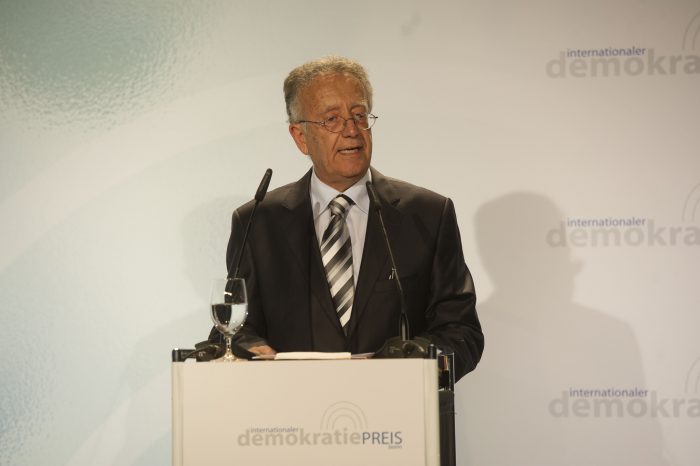In a meeting of the U.N. Human Rights Committee in November 2017, attorney Yadh Ben Achour, president of the Higher Political Reform Commission of Tunisia and a U.N. Human Rights Committee member, argued that abortion is necessary in order to prevent disabilities, specifically Down syndrome.
“I am myself an ardent defender of the handicapped and I understand very well that society and the State have to do everything possible to protect handicapped, help them, and ensure that they have a life, a possible living,” he said. “But that does not mean that we have to accept to let a disabled fetus live. This is a preventative measure.”
He went on to single out those diagnosed prenatally with Down syndrome:
If you tell a woman ‘your child has Dow… what is it called? Down syndrome, Dawn syndrome?’ If you tell her that, isn’t it, or that he may have a handicap forever, for the rest of his life, you should make this woman… It should be possible for her to resort to abortion to avoid the handicap as a preventative measure.
Achour said that while it is important to help anyone born with a disability because once they are born “it is finished,” we do not have to accept those with disabilities before they are born “when the embryo is still in his mother’s womb.”
Children diagnosed prenatally with Down syndrome or any condition are well beyond the stage of an embryo, so it’s clear Archour does not understand basic science and fetal development. In many cases, these children are old enough to survive outside the womb when the diagnosis is confirmed. Most conditions are not diagnosed until the 20-week anatomy scan (or later), and are sometimes confirmed with a second opinion at a later time. Children born at 21 weeks have been able to survive.
READ: MIRACLE: Born at 21 weeks, ‘most premature’ baby is thriving
Developments in prenatal screening have made it possible for some conditions, such as Down syndrome, to be diagnosed much earlier in pregnancy. However, these tests come with high false positive results, reported by investigative groups and the mainstream media. Regardless, to abort anyone at any gestational age based on a diagnosis is cruel eugenics, plain and simple.
Achour argues it is acceptable to defend the right to life of those with disabilities after they are born, but he considers it perfectly ethical to call for their abortions — their intentional deaths — while in the womb. He couldn’t be more wrong. Pushing for the abortion of people with disabilities sends a clear message that Achour, and those who agree with him, do not respect or value anyone living with a disability. To call abortion a preventative measure is to say that some lives are simply not as valuable as others. After all, we do not strive to “prevent” things we value.
The Universal Declaration of Human Rights, published by the United Nations General Assembly in 1948, states: “Everyone has the right to life, liberty and security of person.” It also states that “No one shall be subjected to torture or to cruel, inhuman, or degrading treatment.” The American Center for Law and Justice notes:
The drafters of the Universal Declaration of Human Rights expressly refused to tolerate any eugenic abortion, recalling its use by the Nazi regime. It was only under the pressure of Soviet countries that the drafters of the Declaration renounced in 1948 protecting explicitly human life “from conception.” It is because the Nazi and Soviet regimes were materialists that they promoted abortion and eugenics; and it is against this ideology that the United Nations was founded on the basis of the equal dignity of every human being.
Not only is Achour arguing that a civilized world should deny the right to life of those diagnosed with disabilities — a plain act of eugenics — but he is also arguing for the cruel and inhuman treatment of those people. The abortion method most commonly used in the second trimester, after a prenatal diagnosis has been made, is a D&E abortion, also called a dismemberment abortion. It involves killing a preborn baby by ripping her arms and legs off, one by one. U.S. Supreme Court Justice Anthony Kennedy described this abortion procedure after hearing testimony from late-term abortionist Leroy Carhart:
The fetus, in many cases, dies just as a human adult or child would: It bleeds to death as it is torn from limb from limb. The fetus can be alive at the beginning of the dismemberment process and can survive for a time while its limbs are being torn off.
Dr. Carhart agreed that “[w]hen you pull out a piece of the fetus, let’s say, an arm or a leg and remove that, at the time just prior to removal of the portion of the fetus, … the fetus [is] alive.” Dr. Carhart has observed fetal heartbeat via ultrasound with “extensive parts of the fetus removed,” and testified that mere dismemberment of a limb does not always cause death because he knows of a physician who removed the arm of a fetus only to have the fetus go on to be born “as a living child with one arm.” … In Dr. Carhart’s words, the abortionist is left with “a tray full of pieces.”
We know that preborn humans killed in D&E abortions are capable of feeling pain, but we also know that this level of pain may be felt to an even greater extent than in adults. Former abortionist Dr. Anthony Levatino describes the painful D&E abortion procedure in the animated video below:
Anyone who believes that abortion is acceptable in cases of a disability or any difficult diagnosis is participating in eugenics. To end someone’s life simply because they are different or may have health conditions that require additional support is discrimination in its highest form.








